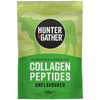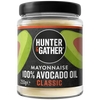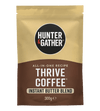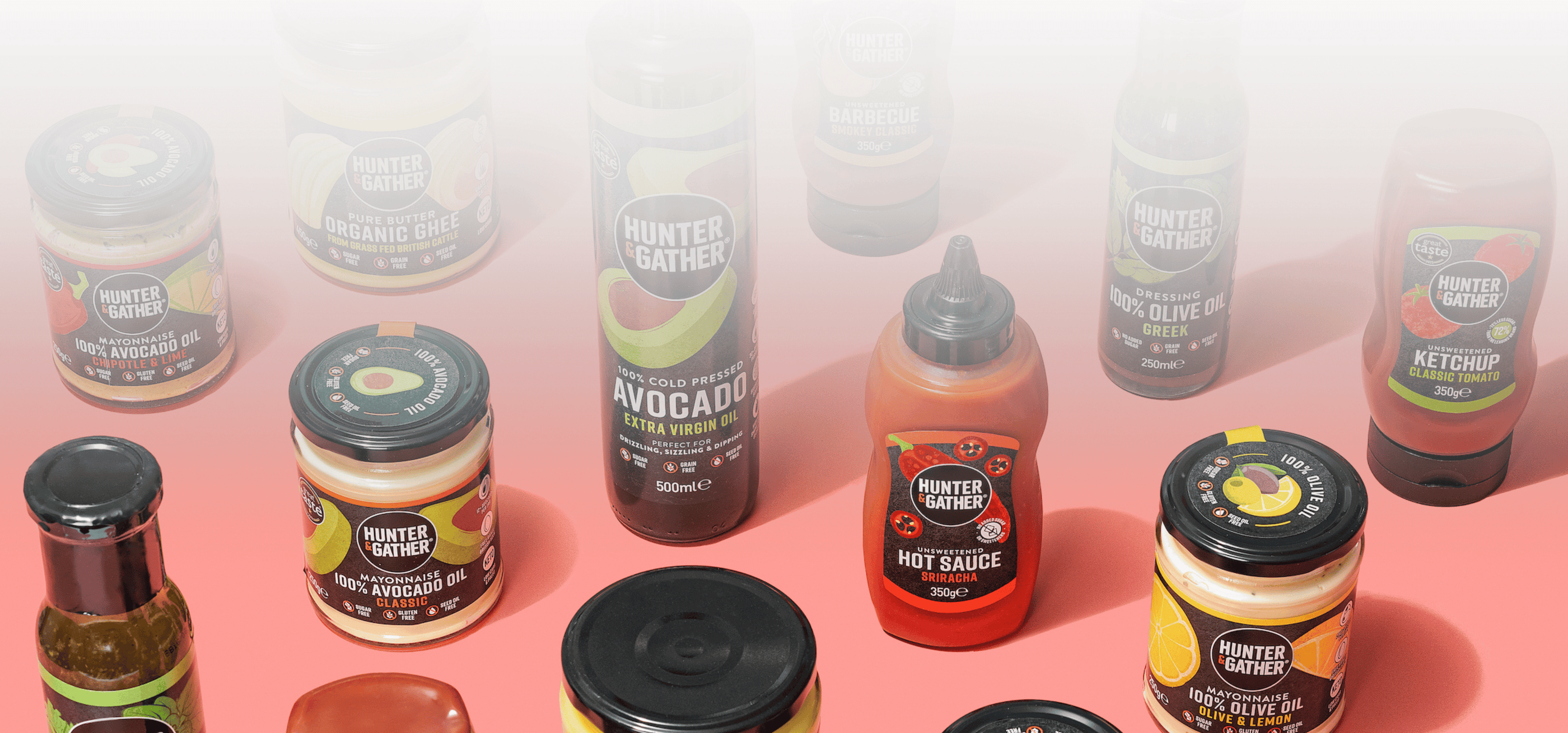In this brand-new year, we'd like to welcome you to Organuary, our favorite time to celebrate the vast nutritional wonders of organ meat.
Organ meats — also called offal or variety meats — are incredible powerhouses of nutrient density, the likes of which virtually no other food compares. In fact, some might say that variety meats are the ultimate superfood.
Incorporating organ meat into your diet is one of the best ways to ensure that you're getting the most out of the foods you eat and moving closer to optimal wellness. It's far more nutrient dense than the muscle meat typical in most Western diets.
Read on to learn about the myriad benefits of eating all parts of the animal (also known as nose-to-tail eating), the best ways to consume the organ meats and what to do if you just can't handle the taste.
Organ Meat vs. Multivitamins
Nutrition researchers and functional medicine practitioners agree that getting nutrients from whole food sources is superior to getting them from multivitamins or other individual supplements. That's because when you're eating a whole food — unprocessed fruits and vegetables with the skin on or the various parts of a whole animal — you're benefiting from food synergy. Food synergy is when a food’s nutrients work together to provide health benefits [1].
For example, liver contains a lot of vitamin A, a fat-soluble vitamin. Liver also contains a lot of fat, which naturally helps your body absorb the vitamin A you've just eaten. This isn't the case with a vitamin A supplement.
Individual nutrients also tend to work together, enhancing each other's effects when consumed as part of a whole foods diet. For instance, iron helps amplify the antioxidant power of vitamin C — both are nutrients found in organ meat. And just as you'd imagine, nature provides these various nutrients in the right proportions to maximise their benefit to your health [1].
Which Organs Should You Eat?
You've likely heard of dishes like liver and onions or kidney pie — made from beef liver and beef kidneys in most cases. It just so happens that liver and kidneys are two of the most nutrient-dense organs found in your typical livestock. This is especially true for ruminant animals. Ruminants are animals that have two stomachs and chew cud. This includes cattle, sheep, goats, buffalo, deer, elk, giraffes and camels.
That's not to say that the organs of pigs and fowl aren't also incredibly nutrient dense. And that’s great news because chicken and duck liver pate are among the most delicious ways to consume liver!
Liver and kidneys are probably the most frequently enjoyed organ meats in the U.K., but other organs and offal deserve some attention too. Although the definition of offal changes slightly from culture to culture, here's a typical list of these organs along with some common preparations you may want to try:
- Liver: pate or liverwurst
- Kidney: steak & kidney pie
- Heart: grilled skewers
- Brain: head cheese
- Tongue: tacos
- Intestine/stomach (tripe): Menudo and sausage casings
- Thymus or pancreas: sweetbreads
- Testicles: fried ‘oysters’
- Skin: pork rinds/chicharrones
- Bones, tendons and other connective tissue: bone broth and other soups like Vietnamese pho
While each of these organs and their corresponding dishes might not be on your daily menu, including one or two per week is a great way to start ‘beefing up’ your nutrient intake.
Organ Meat Nutrition
The nutritional profile of various organs changes from animal to animal, but rest assured, eating organs across the animal kingdom will get you health benefits you’re looking for.
For simplicity's sake, and since it's the most commonly studied, we'll focus on beef. The following information is based on 100-gram servings of beef liver, heart and kidneys. Along the way, we'll pepper in some facts about other animals as well.
Beef LiverBeef liver (and that of other ruminants) is probably the most nutrient-dense item on our list. In fact, it has such a high potency of certain nutrients, like vitamin A, that one serving is enough for your whole week. After seeing a rundown of the most notable nutrients found in beef liver, you'll better understand why we compare the organ meat of ruminants to multivitamins [2]:
- Vitamin A (retinol): supports eye health and vision, bone health, endothelial cell health and white blood cell production [3]
- Riboflavin (B2): supports healthy cell growth, fat breakdown and brain function [4]
- Niacin (B3): converts nutrients to usable energy, makes fat and cholesterol, repairs DNA and contributes to over 400 chemical reactions in the body [5]
- Vitamin B6: aids in the breakdown of proteins into amino acids, carbs into glucose and fats into fatty acids and also supports a healthy immune system, brain function and a healthy level of homocysteine [6]
- Folate (B9): contributes to the formation of DNA and RNA and also metabolises protein, creates red blood cells and is instrumental in fetal development [7]
- Vitamin B12: supports healthy brain and nerve cell development and function in addition to the formation of red blood cells and DNA [8]
- Pantothenic Acid (B5): helps your body make coenzyme A, which is important in breaking down fatty acids and also building them back up [9]
- Choline: converts to acetylcholine, a neurotransmitter that's critical in muscle contractions and healthy pain response, along with proper brain function, healthy cognition and memory retention [10]
- Iron: supports hemoglobin production, which carries oxygen from the lungs all over the body and helps prevent anemia [11]
- Phosphorus: helps build strong teeth, bone, DNA and RNA
- Zinc: supports a healthy immune system, protein production and cell division as well as wound healing and making your senses of taste and smell possible
- Copper: contributes to red and white blood cell production, helps the body absorb iron and supports healthy brain development and immune function
- Selenium: supports a healthy reproductive system, immune system and thyroid function
With a few exceptions, like choline and copper content, you can count on similar nutrient values in other animal livers as well. These include chicken liver, pork liver, goose liver, duck liver and cod liver, which you usually see in oil form as a supplement. Cod liver is also a good source of vitamin D, while beef liver is not.
Organ meats have high levels of B vitamins. So you may be wondering if you can have too much of a good thing. B vitamins are water-soluble, so any excess you consume at a given time will be excreted through your urine and won't cause a problem.
Overdoing fat-soluble vitamins — like vitamins A, E and D — is possible, but not by eating any of the liver we've mentioned here. It's much more likely to reach toxicity through supplementation rather than through the food you consume.
And if the thought of eating liver doesn't appeal to you, we have a solution. Hunter & Gather offers top-quality grass-fed, freeze-dried lamb liver in capsule form so that you can get a daily dose of all these wonderful nutrients.
Beef HeartMuch like liver, beef and other ruminant heart is packed with tons of bioavailable nutrition and health benefits, including CoQ10. This antioxidant provides potent protection against oxidative stress and damage, especially in the cardiovascular and neurological systems. It also assists in energy production, supports a healthy metabolism and may aid in decreasing the frequency of migraine headaches [12].
In addition to CoQ10, the other notable micronutrients in beef heart include [13]:
- Riboflavin (B2)
- Niacin (B3)
- Vitamin B12
- Iron
- Phosphorus
- Copper
- Selenium
Since the heart is made of muscle, it might be the closest thing to a standard steak you'll find on this list, regardless of the animal you choose. Hearts never stop pumping, so you can imagine how strong and tough heart tissue is. It's best enjoyed when thoroughly marinated to make it a bit more tender and easier to chew.
And once again, Hunter & Gather can help if you just can’t imagine chewing on heart at the dinner table. Instead, you can supplement with our combination Liver and Heart Capsules and get the benefits of both liver and heart organ meats. The only ingredient inside these capsules is freeze-dried organ meat from free-roaming Icelandic lamb, giving you the best possible quality without having to cook it up yourself.
Beef KidneyThe kidneys and the liver are both filter organs, which break down toxins from our food and environment to process them out. Neither of these organs actually stores these toxins, a common misconception. Rather, they supply the chemical reactions required for your body to rid yourself of toxins, so when you eat them, they actually boost your own organs' ability to do the same.
Here's a breakdown of the most potent micronutrients in a serving of beef kidney [14]:
- Riboflavin (B2)
- Vitamin B12
- Choline
If you're interested in adding kidney to your diet, but you don't have a local butcher that offers it, we have you covered with our Icelandic Lamb Kidney Capsules. All of our organ products are made with finished lamb that's roamed free and fed on fresh grasses in the sunshine, thus maximising the nutritional value.
Start Eating Organ Meats
Organ meat and other offal are a lot more than just animal byproducts. They're some of the most nutrient-dense foods available and are key to eating nose-to-tail. They also support a healthy paleo, keto or carnivore diet.
The quickest way to get started eating organ meats and other offal is to grab some of our freeze-dried supplements. This way, you don't have to learn to cook any exotic animal parts, and you don't have to develop a taste for them.
But there really are some delicious ways to eat these foods if you're feeling adventurous. Get collagen and bone marrow through bone broth or soups made with bone broth. Or give some pate a try. Mix chopped liver, kidneys and heart with your minced beef, and stir it all into a delicious homemade chili. The possibilities are endless — just pick a place to start and go for it!
All information provided on our website and within our articles is simply information, opinion, anecdotal thoughts and experiences to provide you with the tools to thrive.
It is not intended to treat or diagnose symptoms and is definitely not intended to be misconstrued for medical advice. We always advise you seek the advice of a trained professional when implementing any changes to your lifestyle and dietary habits.
We do however recommend seeking the services of a trained professional who questions the conventional wisdom to enable you to become the best version of yourself.
REFERENCES
[1] https://academic.oup.com/ajcn/article/89/5/1543S/4596924
[2] https://nutritiondata.self.com/facts/beef-products/3469/2
[3] https://www.hsph.harvard.edu/nutritionsource/vitamin-a
[4] https://www.hsph.harvard.edu/nutritionsource/riboflavin-vitamin-b2/
[5] https://www.hsph.harvard.edu/nutritionsource/niacin-vitamin-b3/
[6] https://www.hsph.harvard.edu/nutritionsource/vitamin-b6/
[7] https://www.hsph.harvard.edu/nutritionsource/folic-acid/
[8] https://www.hsph.harvard.edu/nutritionsource/vitamin-b12/
[9] https://www.hsph.harvard.edu/nutritionsource/pantothenic-acid-vitamin-b5/
[10] https://www.hsph.harvard.edu/nutritionsource/choline/
[11] https://www.hsph.harvard.edu/nutritionsource/iron/
[12] https://www.mayoclinic.org/drugs-supplements-coenzyme-q10/art-20362602
[13] https://nutritiondata.self.com/facts/beef-products/3464/2
[14] https://nutritiondata.self.com/facts/beef-products/3467/2















